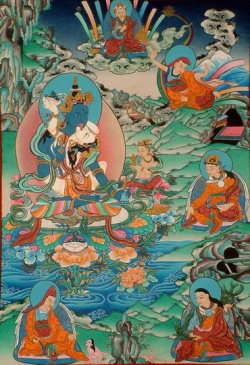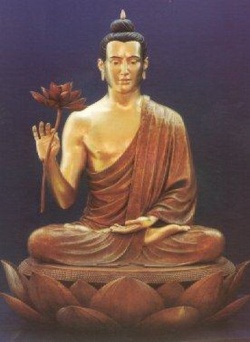Southern and Northern Schools
Southern and Northern Schools.
An early division of Ch'an/Zen Buddhism in China.
Both schools agree in accepting the first four successors or patriarchs after Bodhidharma: Hui-Kʾo, Seng-tsʾan, Tao-hsin, and Hungjen. They divide over the next successor.
The division is reinforced by basic issues concerning the way to enlightenment.
Thus, contrary to the titles, the division was not so much one of geography as of emphasis.
Roughly, South is associated with sudden enlightenment, North with gradual approaches—hence the summary formula, nan-tun pei-chien (Jap., nanton hokuzen), ‘suddenness of south, gradualness of north’.
The history of the schism is obscured by the fact that it is mainly told by the eventual ‘winners’, the South.
But the North had a central part in the transmission from Bodhidharma via Fa-ju (638–89), who addressed his teacher, Hung-jen, as ‘patriarch’ (indicating for the first time formal transmission), and who is regarded as the founder of the North.
He was succeeded by Shen-hsiu (667–730), although Southern accounts replace him with Huineng.
But Shen-hsiu received the seal of recognition from Hung-jen (inka-shōmei), and was widely recognized for his wisdom and powers of meditation.
He systematized the earlier teachings which he had received, in Kuan-hsin lun, harmonizing sūtras and meditation practices, and transmitting the foundations laid by Bodhidharma into China.
According to his epitaph, ‘he cut off the flow of ideas and put a stop to the rush of imagination, and with all his energy concentrated his mind’, and he was able to go ‘to that domain where there is no longer any distinction between sacred and profane’.
All that is far removed from the dominant Southern accounts, which in their tendentiousness are like Roman Catholic histories of Protestantism (or vice versa).
The South was established by Shen-hui, a disciple of Hui-neng, at the Great Dharma Assembly on 15 Jan. 732, in Hua-tʾai.
Of Shen-hui's earlier life, little is known apart from his disputes with pupils of Shen-hsiu, Pʾu-chi and I-fu.
According to the Tun-huang text, Shen-hui argued that Bodhidharma is the authentic source of Zen:
he stopped the futile activity of building temples, carving images of the Buddha, and copying sūtras.
The dharma seal of recognition and the robe were transmitted to Hui-Kʾo, from whom they were transmitted in unbroken line to Huineng.
The Northern protagonist refused to confine transmission to one line, via the robe.
Shen-hui replied: ‘The robe authenticates dharma, and the dharma is the doctrine [confirmed by] the robe …
There is no other transmission.’
True enlightenment, according to Shen-hui, is a sudden breakthrough to no-mind: ‘Our masters have all grasped enlightenment at a single stroke [Jap., tantō jikinyū], with no concession to steps or progressions.’
North persisted for several more generations, but the Southern view prevailed and became what is now recognized as Zen.
But the different emphases between Sōtō and Rinzai indicate that the issue was never wholly resolved.
Source
http://www.encyclopedia.com/doc/1O101-SouthernandNorthernSchols.html

